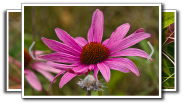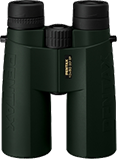Common Brown Cup
(Phylloscypha phyllogena)
Conservation • Description • Habitat • Ecology • Distribution • Taxonomy
|
|
||||||||||||||
Description |
Common Brown Cup, also called Pig-ear Cup, is a common and widespread, early season, medium-sized to large, cup fungus. It occurs in Europe and North America. It occurs in the United States and southern Canada east of the Great Plains and west of the Great Basin. It is common in Minnesota. Common Brown Cup is found in spring and early summer, on the ground, in groups or in clusters, under deciduous or coniferous trees. It sometimes grows on woody debris, on moss-covered stumps, on well-decayed wood, and occasionally in woodchips. It is thought to be saprobic, getting its nutrients from dead and decaying wood (Emberger, Fungi Growing on Wood), but it may also be mycorrhizal, getting nutrients from the rootlets of trees (Kuo, MushroomExpert.com). When it first appears, the fruiting body is deeply to shallowly shaped. Clustered cups often appear compressed or lobed. As it ages, it flattens out, often becoming disk shaped. Mature caps are ¾″ to 4¾″ (2 to 12 cm) in diameter and ¾″ to 2″ (2 to 5 cm) high. They are usually contorted when clustered. The fertile upper (inner) surface is dull, hairless, smooth, and reddish brown to purplish brown, olive brown, or yellowish brown. The sterile lower (outer) surface is brown to reddish brown or purplish brown. The texture is finely mealy or grainy due to small blister-like or pimple-like bumps, especially near the margins. The margins are thin with sharp edges, and they turn black as they dry. There is no stalk. The flesh is thin, brittle, and brown to whitish. It does not change color when sliced. Edibility is unknown. The spore print is white. |
Similar Species |
Habitat and Hosts |
|
Ecology |
Season |
Spring to early summer |
Distribution |
||
|
Sources Biodiversity occurrence data published by: Minnesota Biodiversity Atlas (accessed through the Minnesota Biodiversity Atlas Portal, bellatlas.umn.edu, 6/7/2025). |
|
| 6/7/2025 | ||
Occurrence |
||
Common |
||
Taxonomy |
|
Kingdom |
Fungi (Fungi) |
Subkingdom |
Dikarya |
Phylum |
Ascomycota (Sac Fungi) |
Subphylum |
Pezizomycotina (Sac Fungi and Lichens) |
Class |
Pezizomycetes |
Subclass |
Pezizomycetidae |
Order |
Pezizales |
Family |
Pezizaceae (pezizas, desert truffles, and allies) |
Genus |
Phylloscypha |
|
|
This species was formerly classified as Peziza phyllogena. A recent molecular analysis of the genus Peziza (Van Vooren N., 2020) proposed reinstating three genera and raising one section to generic rank, and it proposed six new genera. Peziza phyllogena became Phylloscypha phyllogena, the type species for the new genus Phylloscypha. |
|
Subordinate Taxa |
|
|
|
Synonyms |
|
Aleuria olivacea Galactinia badioconfusa Galactinia olivacea Peziza badioconfusa Peziza olivacea Peziza phyllogena Plicaria olivacea |
|
Common Names |
|
Common Brown Cup Pig-ear Cup |
|
Glossary
Mycorrhizal
A symbiotic, usually beneficial relationship between a fungus and the tiny rootlets of a plant, usually a tree.
Saprobic
A term often used for saprotrophic fungi. Referring to fungi that obtain their nutrients from decayed organic matter.
Visitor Photos |
||
Share your photo of this fungus. |
||
This button not working for you? |
||
Paul |
||
| Peziza phyllogena pig-ear cup |
|
|
 |
 |
|
 |
|
|
MinnesotaSeasons.com Photos |
||
|
||
|
||

Slideshows |
|

Visitor Videos |
||
Share your video of this fungus. |
||
This button not working for you? |
||
|
Other Videos |
||
Phylloscypha phyllogena |
About
Apr 18, 2020 Just before confinement, we could find this beautiful Peziza Phyllogena previously called Peziza badioconfusa, which in our area is a little ahead of spring, which is where it usually comes out. In the video I have included some flowers from April of last year: Limniris pseudacorus, Aquilegia vulgaris, Orchis mascula, Lamium galeobdolon, Lamium maculatum, and Myosotis martini Peziza phyllogena Cooke 1877 Features: - Cup-shaped carpophore, when it is young since as it grows it flattens and cracks slightly, and takes the shapes seen in the video. The size is small-medium, between 2 and 7 cm in diameter. The outer part (the sterile one) is reddish brown and has tiny granulations. The inner part (hymenium, the fertile part) a little darker and smoother. When they are young, the color differences look good, but as adults the colors are practically identical. Foot: Practically non-existent Flesh : Lilac brown mainly on the base, with a pleasant smell and taste Edibility: Raw is toxic, it must be eaten well cooked, To eat a mushroom you have to be very sure of its identification and how to cook it. Habitat: It usually appears in groups, on floors with rotten wood, or wood remains, in our case in an oak forest, "Quercus pirenaica" Season: From late winter to early summer Place: Mungia - Bizkaia - Confusions: With the Badia fish that comes out in autumn, |
Brown Cup Fungus, Common Brown Cup or Peziza phyllogena |
About
May 12, 2021 I found this cool cup fungus while out looking for Morel mushrooms. |
Brown Cup Fungus (or Pig-ear Cup Fungus) |
About
May 29, 2020 Common Brown Cup Fungus (also known as Pig-ear Cup), is in the cup fungi family (Peziziaceae). Despite the name, it is actually uncommon in Fontenelle Forest. These mushrooms fruit on, or near, rotting wood and can get up to five inches wide. |

Visitor Sightings |
||
Report a sighting of this fungus. |
||
This button not working for you? |
||
|
|
MinnesotaSeasons.com Sightings |
||
|

|
Created: 6/7/2025 Last Updated: © MinnesotaSeasons.com. All rights reserved. |
